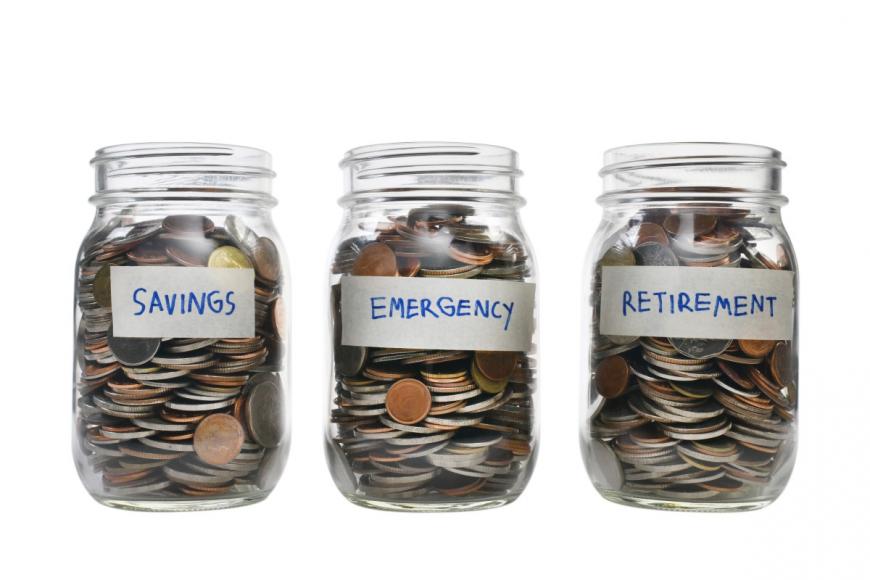
Financial capabilities everyone needs to develop: part 2
Developing one’s financial capabilities is crucial to improving financial wellness. In a previous blog, I discussed three of those capabilities: setting financial goals, maximizing income and spending wisely. In this blog, I’ll discuss three more: saving money regularly to meet your goals; borrowing money when appropriate; and protecting your family, health, property and assets.
Saving Money Regularly to Meet Your Goals
Almost 20 years ago, I was talking with a friend of mine over a glass of wine. The topic was money; I was stressed over always being broke. My friend asked me two questions that changed my life forever. The first question was, “When you say you’re broke, is it because you have no money or because you have spent all you have planned to spend?” I nearly spit out my wine with laughter. At the time, being broke not only meant I was out of “cash”; I was also overdrawn on my checking account and living off credit. The thought of planning my spending was foreign to me.
Her second question was, “Do you save to spend or save just for the sake of saving?” After gulping down another sip of wine (for fear of spitting it out), I laughed incredulously and responded, “I don’t save.”
This led to an hours-long, judgment-free discussion about managing money. It set me on a path that turned my financial life around and eventually led me to teaching others about money management. I began using the envelope budgeting system for my discretionary spending and setting up direct deposit into my savings account. Within a year, I stopped overdrawing my checking account and built up $1,000 in savings. Things kept improving. I now organize my savings into four different categories: debt prevention, emergency preparedness, fun activities and retirement funds.
If you are like I was and want to start saving money, try these steps:
- Add up your living expenses, and subtract them from your take-home pay. If the number is negative, you must change that first. You will either need to increase income or lower your expenses.
- Set a savings goal. Mine was setting aside $1,000 in a year so I could cover small emergencies and irregular expenses that, back then, ended up on my credit cards.
- Once you have analyzed your spending, determine how much you need to save from each paycheck to reach your goal by the deadline you set. I wanted to save $1,000 in a year, so I determined this amount was $38.46 per paycheck (I was paid every other week).
- Set up direct deposit from your paycheck to savings, and set rules for when you can or can’t pull from savings. I only allowed myself to pull out savings for car repairs, medical bills or school events for my daughter.
Once you have a minimum amount of money in your savings, it becomes easier to avoid taking on debt. My next step was to pay down my high interest credit card balance. Once I paid that off, I slowly built up three months of living expenses. Now, all my savings goes towards fun activities and retirement. It took a long time to get to this place, and I had a lot of detours along the way. Every time I got off track, I readjusted and started towards my goals again. You can, too. Start small and hit one goal at a time.
Borrowing Money When Appropriate
Most of us will take on some type of debt during our lives. It may be student loans to get an education, a car loan to gain reliable transportation or a mortgage to buy a home. It is important to remember that not all debt is created equal, and some types of debt are toxic.
To be a savvy borrower, you need to understand the difference between simple interest and compound interest so you can determine how much it will cost you to borrow the money. It’s also important to understand how credit reports and scores work. The information from your credit report creates your credit score, and your score determines whether you will be granted credit or loans and how much borrowing that money will cost you.
Mortgages, car loans and student loans all carry simple interest. They might have a fixed interest rate, which stays the same throughout the life of the loan, or a variable interest rate that changes every so often (as determined under the terms of the loan). Variable interest rate loans can be tempting because they often start out at a lower rate than fixed rate loans. They are risky, though. If interest rates go up over time, you will pay more on the loan. If rates go up too high, the loan might become unaffordable.
Credit cards charge compound interest. This makes them very difficult and expensive to pay off. When money is borrowed on a credit card, you start accruing interest from the day you borrow the money. In other words, it accrues daily. Most credit card companies give borrowers a “grace period” from the statement closing date to the payment due date. That means borrowers don’t have to pay the previous statement’s accrued interest if they pay the entire balance by the payment due date. However, if the entire balance isn’t paid off, any interest that accrued will be capitalized into the new balance of the credit card. That means when the next statement closes, the borrower will pay interest on the accrued interest plus any remaining balance. With high interest rates on credit cards, it adds up fast. To avoid this, here are some good rules to consider:
- Use credit cards as a convenience or to purchase items you already have the funds for; don’t use them to afford things you don’t have the money for.
- Pay your credit card balance in full each month.
- If you can’t pay your credit card in full each month, pay as much over the minimum payment as possible.
- If you have multiple credit cards, focus on paying extra on one card at a time to pay off that card more quickly. When the first card is paid off, add the entire amount you were paying to that card to the next card. Do that until all credit cards are paid off.
- If you can’t make progress on your debt, contact LSS Financial Counseling and schedule an appointment to meet with a counselor to make a plan to eliminate your debt.
Protecting Your Family, Health, Property and Assets
You need to protect the things you need and care about – your family, health, property and financial assets. Learn about the different types of insurances – medical, life, disability and auto – and how much each protects what you care about. Having the right type of insurance in place can be the difference between everything being okay, filing for bankruptcy or worse.
It's also necessary tp learn how to protect yourself from identity theft and frauds and scams and know where to file a complaint against bad players. Minnesotans can report fraud and scams to the Minnesota Attorney General’s office and/or the Minnesota Department of Commerce. There are predatory and sub-prime loans that may seem like a lifesaver but can become a debt anchor instead (think payday loans, title loans and high interest/bad credit loans). Many of these loans are restricted or outright illegal in Minnesota and should be reported to the Minnesota Department of Commerce, which also handles complaints about Senior Financial Exploitation.
If you have questions about any of the capabilities discussed here, our financial counselors are ready to assist you! LSS Financial Counseling has certified, experienced financial counselors who work with individuals across the nation to build financial capabilities. You can schedule a free, confidential appointment by calling 888.577.2227, or you can get your support online.

Author Shannon Doyle is Program Manager for Partnerships and Education for LSS Financial Counseling.
